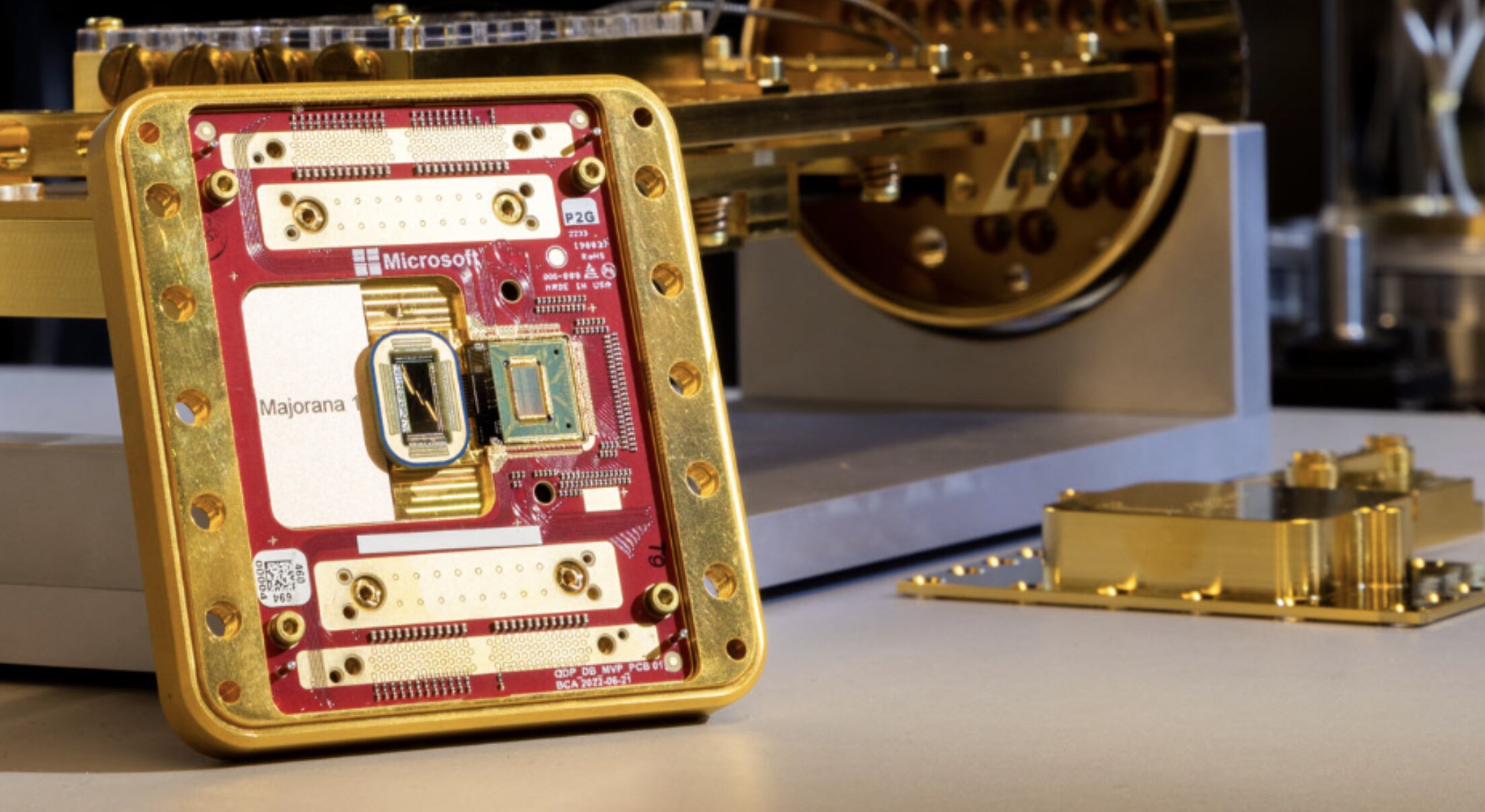Towards a fully functional topological quantum computer
In a leap forward for quantum computing, a Microsoft team led by UC Santa Barbara physicists on Wednesday unveiled an eight-qubit topological quantum processor, the first of its kind. The chip, built as a proof-of-concept for the scientists’ design, opens the door to the development of the long-awaited topological quantum computer.

“We’ve got a bunch of stuff that we’ve been keeping under wraps that we’re dropping all at once now,” said Microsoft Station Q Director Chetan Nayak, a professor of physics at UCSB and a Technical Fellow for Quantum Hardware at Microsoft. The chip was revealed at Station Q’s annual conference in Santa Barbara, and accompanies a paper published 1 in the journal Nature, authored by Station Q, their Microsoft teammates and a host of collaborators that presents the research team’s measurements of these new qubits.
“We have created a new state of matter called a topological superconductor,” Nayak explained. This phase of matter hosts exotic boundaries called Majorana zero modes (MZM) that are useful for quantum computing, he explained. Results of rigorous simulation and testing of their heterostructure devices are consistent with the observation of such states. “It shows that we can do it, do it fast and do it accurately,” he said.
The researchers also followed up their Nature result with a paper currently in preprint 2 on arXiv, outlining a roadmap for scaling up their technology into a fully functional topological quantum computer.
Majorana magic
The promise of quantum computing lies in the speed and power of its computations, expected to outperform even the most advanced classical supercomputer. All of this rests on the qubit, the quantum computing version of the bit, the fundamental unit of information for classical computers. While classical bits exist only in a state of either zero or one, qubits can represent zero, one and combinations in between.
Qubits can come in different forms, utilizing the quantum behaviours of trapped ions, for instance, or photons. Topological systems are based on a different type of particle called an anyon, a type of “quasiparticle” that emerges as the result of the correlated states of many interacting particles at the surface of a material, in this case a superconducting nanowire.
What makes topological quantum computing such a hot field of research is that it promises more stability and robustness to error than other quantum computing systems. Qubits can be prone to error, requiring quantum computer builders to account for it by, for instance, building more qubits to error-correct.
“A complementary approach is to build in error correction at the hardware level,” Nayak said. Because quantum information is distributed and stored over a physical system rather than in individual particles or atoms, he explained, the information being handled by the topological qubits is less likely to lose its coherence, resulting in a more fault-tolerant system.
References
- Microsoft Azure Quantum., Aghaee, M., Alcaraz Ramirez, A. et al. (2025) Interferometric single-shot parity measurement in InAs–Al hybrid devices. Nature doi: 10.1038/s41586-024-08445-2 ↩
- Aasen, D. et al. (2025) Roadmap to fault tolerant quantum computation using topological qubit arrays arXiv arXiv:2502.12252 ↩